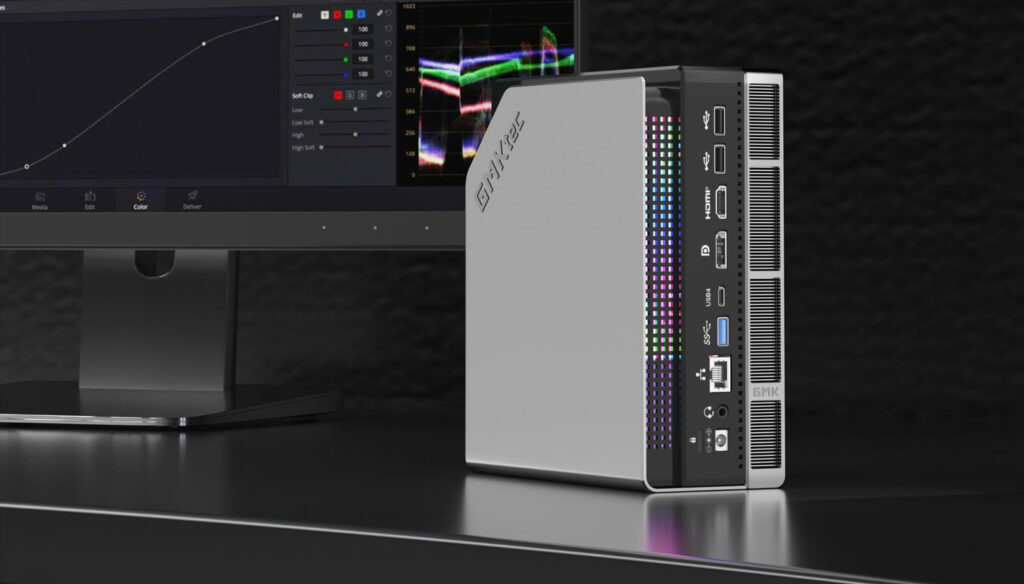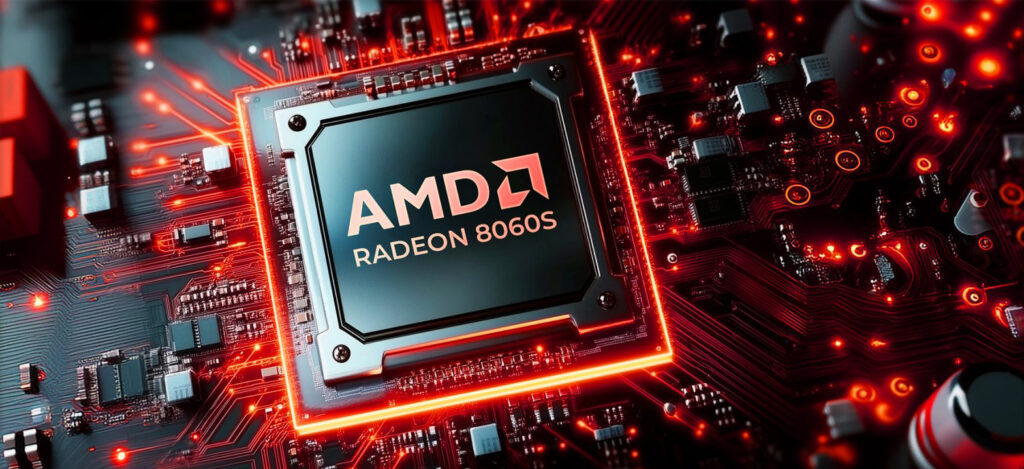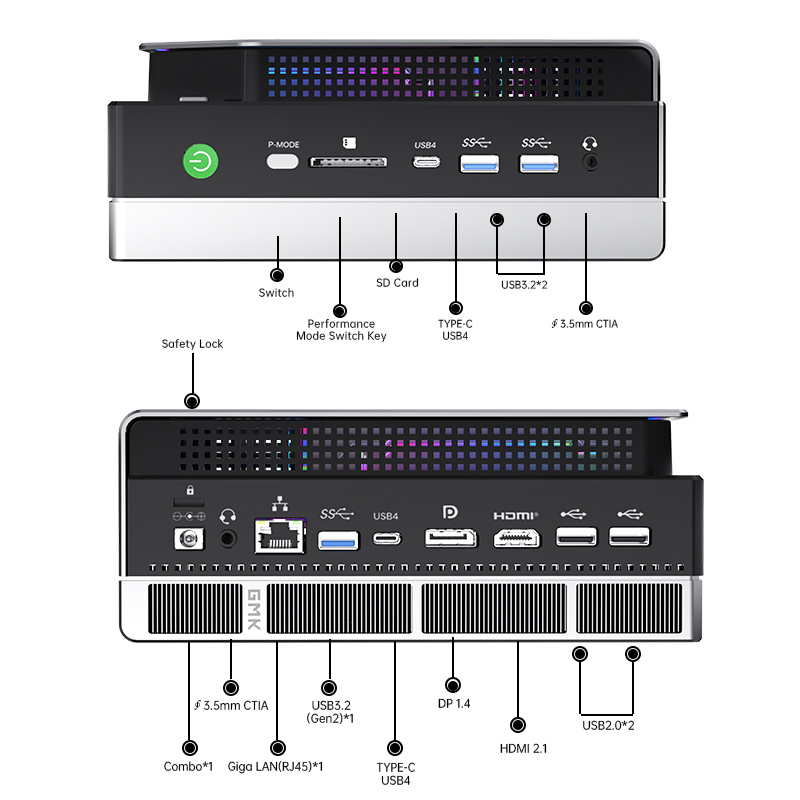
The GMK EVO – X2 mini PC is specifically designed for AI development, boasting powerful performance. It is equipped with an AMD Ryzen AI Max + 395 APU, featuring a 16-core, 32-thread Zen 5 architecture with a base clock speed of up to 5.1GHz. It integrates a 40 CU RDNA 3.5 GPU (Radeon 8060S), and a XDNA 2 architecture NPU, offering 50 TOPS of AI computing power, with a total computing power of 126 TOPS.
For memory and storage, it supports up to 128GB of LPDDR5X memory with a bandwidth of 256GB/s; it’s equipped with a 2TB PCIe 4.0 SSD, achieving sequential read speeds of 7103.90 MB/s and sequential write speeds of 6431.00 MB/s, significantly reducing large model loading times.

This mini PC excels in AI applications. It can locally run quantized language models with parameter scales ranging from 32B to over 200B. It can also concurrently load multiple models for language, image generation, and speech-to-text transcription, catering to diverse AI creation needs involving text, images, and audio. Large model training and inference tasks, which previously relied on cloud servers, can now be efficiently completed locally. This reduces reliance on cloud-based GPUs and avoids the risk of uploading sensitive data.

In terms of design, it features a unibody “recycled aluminum” alloy chassis structure, with a silver and black color scheme exuding a minimalist industrial aesthetic. Its compact size makes it highly portable. The I/O is exceptionally rich, featuring two front-mounted USB 3.2 Gen2 Type-A ports with theoretical transfer rates of up to 10Gbps for convenient data backup and transfer. It also includes a 3.5mm audio jack for connecting headphones or microphones to suit different scenarios. The rear panel boasts a diverse array of ports, including two HDMI 2.1 ports and a DisplayPort 1.4 port, supporting 8K resolution video output and multi-display configurations. A 2.5G Ethernet port provides faster network speeds. A USB 3.2 Gen2 Type-C port supports high-speed data transfer, video output, and charging. Two USB 2.0 Type-A ports are available for connecting low-speed peripherals such as keyboards and mice.
For cooling, its dual-fan, three-heat pipe cooling solution supports 140W of sustained performance, ensuring stable and reliable operation under high loads.

What are ESD components, and what is their importance in mobile phones? The significance of built-in ESD components.
ESD components are specialized electronic components designed to protect electronic devices from the effects of electrostatic discharge (ESD). Electrostatic discharge is a sudden release of electrical charge that can potentially damage electronic devices, leading to device malfunctions or a shortened lifespan. ESD components are designed to absorb, conduct, or dissipate electrostatic discharges to prevent damage caused by static electricity.
In mobile phones, the primary role of ESD components is to protect the internal electronic components from the harm caused by electrostatic discharge. Various circuits and components inside the phone are highly sensitive to ESD, which is why multiple ESD components are typically used in the phone’s design to provide protection. These components may include diodes, ESD diode, MOSFET and more.
Specifically, ESD components in a mobile phone may serve the following purposes:
Interface Protection: Various interfaces of the phone, such as the charging port and headphone jack, may require ESD components to prevent damage from electrostatic discharge.
RF Circuit Protection: RF circuits in mobile phones are highly sensitive to ESD and require ESD components to safeguard these critical circuits.
Processor and Memory Protection: Processors, memory, and other crucial components in the phone also require ESD protection to ensure the device’s normal operation.
Touchscreen and Display Protection: The touchscreen and display are integral parts of a mobile phone that also require ESD components to prevent static electricity damage.
In summary, ESD components play a crucial role in protecting the internal electronic components of a mobile phone from damage caused by electrostatic discharge, ensuring the phone’s proper operation and longevity.